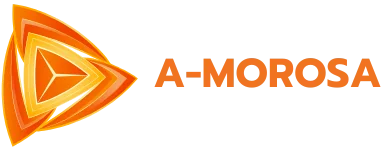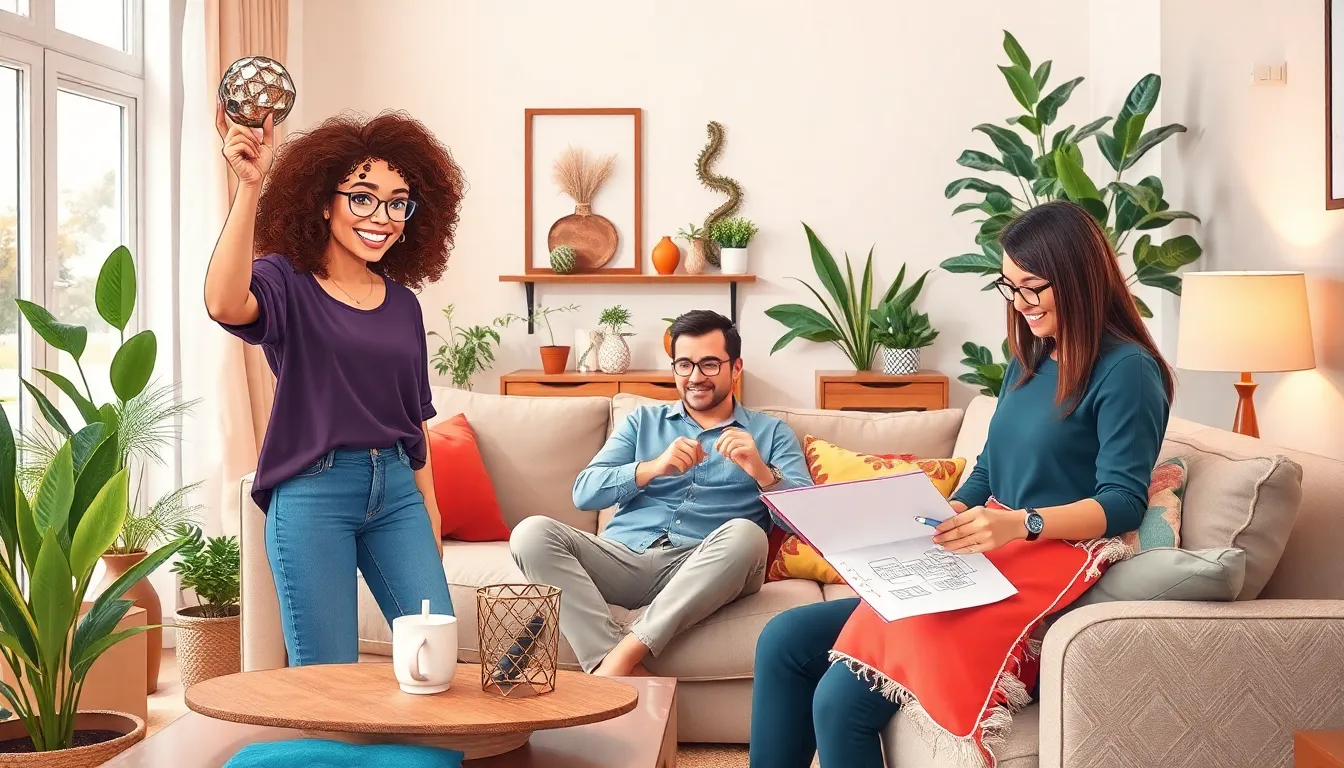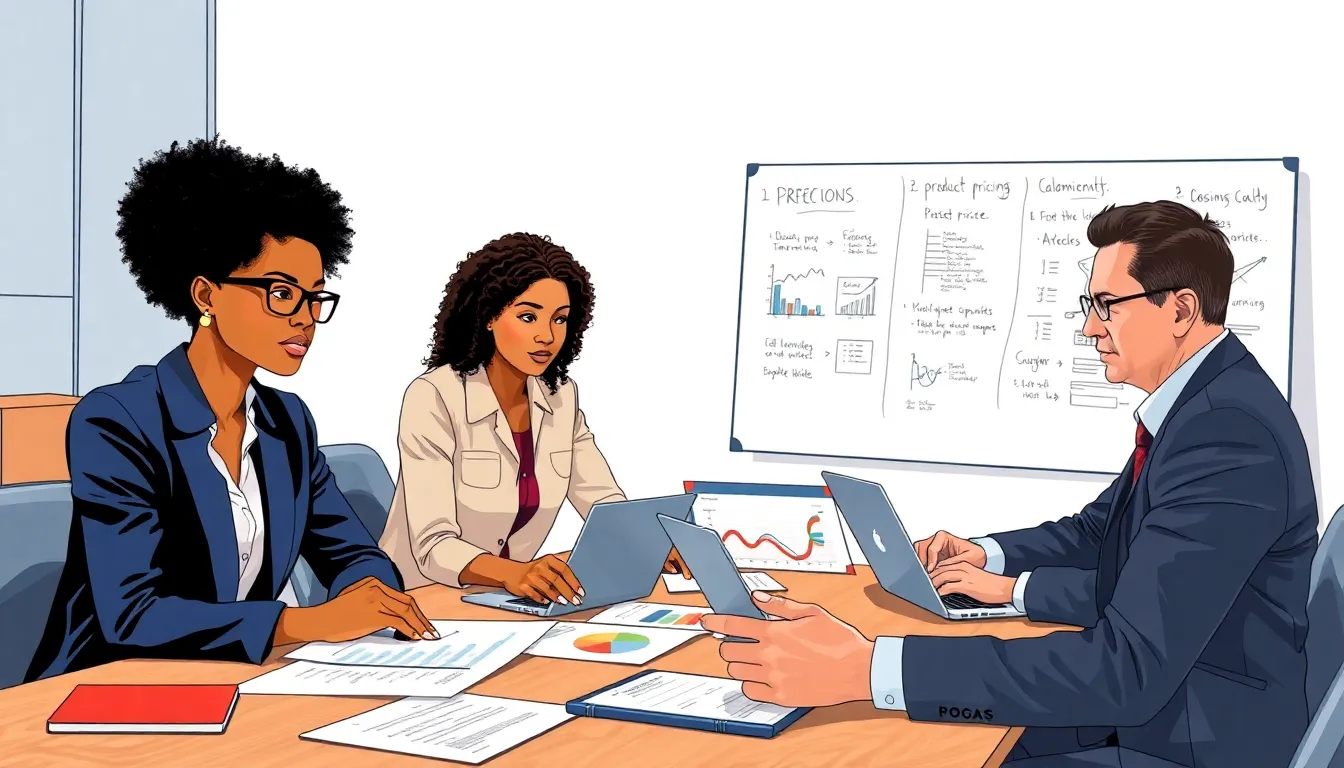Table of Contents
ToggleDesigning a product isn’t just about slapping together some materials and hoping for the best. It’s a thrilling journey where creativity meets strategy, and it often feels like trying to solve a Rubik’s Cube blindfolded. But fear not! With the right approach, anyone can master the art of product design and avoid the dreaded “what were they thinking?” moment.
Understanding Product Design
Product design encompasses a blend of creativity and strategic thinking. Successful designers blend artistic elements with practical functionality to create solutions.
Importance of Product Design
Effective product design significantly influences customer satisfaction. A well-designed product not only meets user needs but also enhances brand perception. Studies show that 93% of consumers prioritize visual appearance over functionality when making purchasing decisions. Such statistics indicate that appealing designs can lead to higher sales and customer loyalty, as they foster a connection between the consumer and the brand. Designers should recognize the value of aesthetics alongside usability. Excellent product design enhances market competitiveness, making it essential for businesses aiming for growth.
Key Elements of Effective Design
Key elements of effective design include functionality, aesthetics, and user experience. Functionality ensures products perform tasks efficiently. Aesthetics capture attention through visual appeal, influencing buyer choices. User experience engages customers, facilitating ease of use and satisfaction. Consideration of materials also plays a critical role; selecting durable and sustainable materials can enhance product longevity and environmental impact. Balance among these elements results in products that not only fulfill needs but also delight users. Comprehensive understanding of these components sets a strong foundation for successful product design strategies.
The Design Process

The design process encompasses several critical stages, each contributing to effective product development. Prioritizing each phase enhances the overall outcome and increases market success.
Research and Ideation
Effective research forms the foundation of product design. Understanding customer needs and market trends informs decision-making. Designers analyze competitors and conduct surveys, seeking valuable insights. Ideation follows research, allowing teams to brainstorm innovative concepts. Engaging in collaborative sessions can lead to unique solutions that capture attention. Using digital tools further aids in visualizing ideas before moving to the next phase. Each step in this stage shapes the direction of the design, making it essential to invest time and effort here.
Prototyping and Testing
Prototyping transforms ideas into tangible products. During this stage, designers create models to assess functionality and usability. Rapid prototyping techniques enable quick iterations, allowing for feedback incorporation. Testing the prototypes reveals strengths and weaknesses, leading to necessary adjustments. Gathering user feedback enables designers to refine the product further. Prioritizing this stage is vital, as 93% of consumers favor attractive designs over functionality. Successful testing ensures that the final product not only meets but exceeds user expectations, enhancing satisfaction and loyalty.
Tools and Techniques for Product Design
Product design demands effective tools and techniques to streamline the process. Utilizing the right resources can enhance creativity and efficiency, leading to successful outcomes.
Software and Resources
Designers often leverage software like Adobe Creative Suite and Sketch for product development. These tools enable users to create detailed designs and prototypes efficiently. Collaboration platforms such as Figma further facilitate teamwork and feedback cycles. Online resources, including design communities and tutorials, provide valuable insights and skill enhancement. Utilizing these resources allows teams to stay updated on trends and best practices, contributing to a more effective design process.
Visual and Graphic Design Techniques
Effective visual design techniques enhance product appeal and user experience. Utilizing color theory can evoke specific emotions and responses from consumers. Typography influences readability and overall aesthetics, making it a crucial element in design. Incorporating consistency in design elements ensures a cohesive brand identity. Applying visual hierarchy guides users through the product intuitively. User testing on visual elements gathers insights that inform adjustments, ensuring the final design resonates with target audiences.
User-Centric Design
User-centric design places the user at the forefront of the product development process. Understanding expectations leads to creating products that truly resonate with consumers.
Understanding User Needs
Identifying user needs forms the foundation of effective design. Designers should conduct extensive research, including competitor analysis and customer surveys, to gather insights. Involvement of potential users during brainstorming ensures that ideas align closely with their preferences. Designers focus on empathy, actively listening to their target audience. Statistically, 93% of consumers prioritize visual appearance over functionality, underscoring the need for aesthetic considerations alongside user requirements.
Incorporating Feedback
Receiving and implementing user feedback can dramatically improve the design process. Designers encourage collaboration through focus groups and beta testing, enabling real users to interact with prototypes. Rapid iterations based on feedback allow for refinements, enhancing the final product. Continuous dialogue with users can reveal hidden pain points and desires. Emphasizing feedback ensures that products meet expectations, ultimately leading to greater customer satisfaction and loyalty.
Effective product design is a multifaceted journey that blends creativity with strategic insight. By prioritizing user needs and employing robust research methods, designers can create products that resonate with consumers. The focus on aesthetics functionality and user experience can significantly enhance customer satisfaction and brand loyalty.
Utilizing the right tools and techniques is crucial in bringing innovative ideas to life. Designers who embrace collaboration and actively seek user feedback will find themselves better equipped to navigate the complexities of the design process. Ultimately the goal is to create products that not only meet market demands but also delight users and drive business success.







